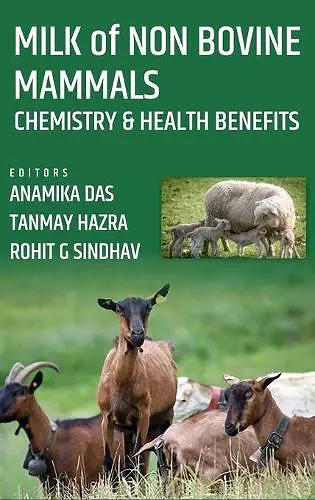Milk of Non Bovine Mammals: Chemistry and Health Benefits
Anamika Das, Tanmay Hazra & Rohit G Shindhav author
Format:Hardback
Publisher:New India Publishing Agency
Published:25th Feb '21
Should be back in stock very soon

Milk has been an important component of the human diet since ancient times, providing a significant amount of protein, micronutrients, and vitamins that are essential for fighting and alleviating malnutrition. Of the worlds total milk production, cow milk contributes 82.7%, followed by milk from buffaloes, goats, sheep, and camels. Cow milk makes up the majority of the worlds total milk production.
While cow milk has numerous health benefits, there are also some adverse effects or negative side effects associated with it for certain populations in the world. These adverse effects have been categorized as symptoms of lactose intolerance, a condition characterized by difficulty in digesting milk due to a lack of the enzyme Lactase. Milk allergy occurs due to an adverse immune reaction to certain milk proteins and is usually referred to as cow milk protein allergy (CMPA).
Non-cow (goat, camel, donkey, yak, horse) milks are closely linked to the culinary cultures of many societies around the world. Non-bovine milks are of great interest to researchers in terms of milk production, technology, chemistry, microbiology, safety, nutrition, and health aspects.
ISBN: 9789390175116
Dimensions: 152mm x 19mm x 229mm
Weight: 530g
234 pages